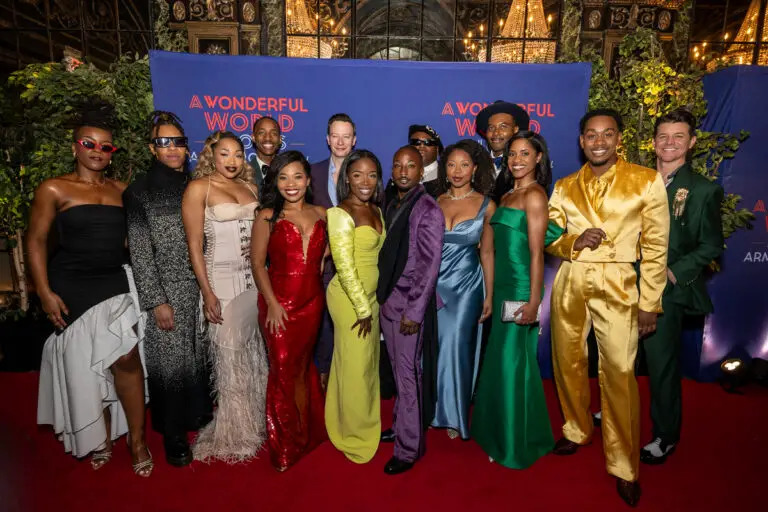Trees of green, red roses, and timeless jazz standards await audiences in Andrew Delaplaine and Christopher Renshaw’s “A Wonderful World”. The new Broadway presentation of Louis Armstrong’s personal life and music career opened at Studio 54 on November 12th.

As I took my seat at Studio 54, it was clear that the audience was a mixed bag of casual listeners, broadway lovers, jazz enthusiasts, and Louis Armstrong superfans. No matter what group each person fell into, we all knew at least one detail of Louis Armstrong’s story: the instantly identifiable tone of his voice.
From the very first word of Aurin Squire’s book, it was clear that star and co-Director James Monroe Iglehart was able to channel Armstrong and imitate the gravelly tone with great precision. He fully embodies the icon in both his captivating vocals and his dialogue, the latter of which volleys seamlessly between dramatic and comedic throughout the production.
As the story unfolds, we find that Squire’s book takes a brilliant approach to Armstrong’s biography, choosing to utilize the legend’s four wives to advance the plot through the 50+ years that are covered on stage. Each romance marks the beginning of a new chapter on the Studio 54 stage in a fast-paced narrative. This format not only lends itself well to walking the audience through Armstrong’s life and career, but it also treats us to four strong leading women.
Most notably, Darlesia Cearcy, last seen on a Broadway stage earlier this year in “How To Dance In Ohio,” delivers a masterful performance as Louis Armstrong’s fourth and final wife Lucille Watson. Cearcy gives such a wide range of emotion in her lines that makes her one of the most well developed characters in the show despite the fact that she is not introduced until after intermission.

While the cast delivered an excellent performance, I was most impressed by a duo who was never on stage. Set Designers Adam Koch and Steven Royal somehow created a stage that was both simple and sophisticated, vintage and modern, and all around perfect for this story. The versatile scenery masterfully uses one stage design to carry audiences from jazz clubs to dining rooms to tour buses and beyond with very few changes between scenes.

Overall, “A Wonderful World” delicately walks the line between a feel-good musical and an American history lesson. The beautiful set, joyous music, and captivating drama are sure to entertain audiences through their bright blessed days and their dark sacred nights.























Comments are closed.